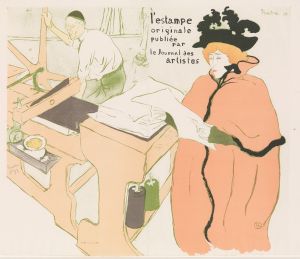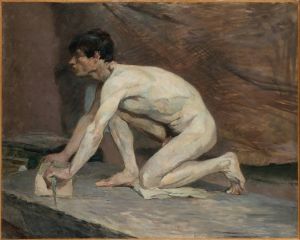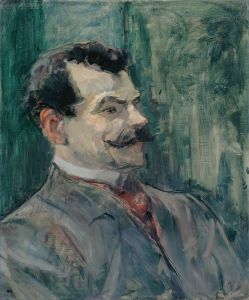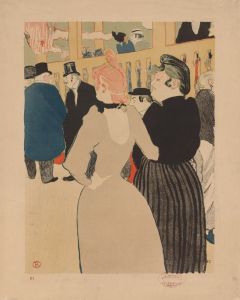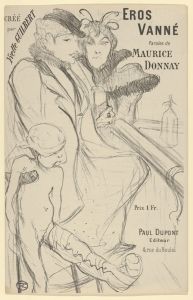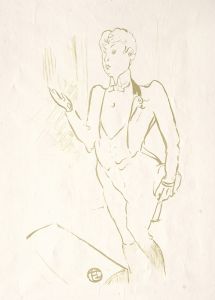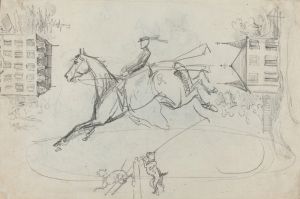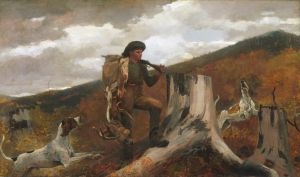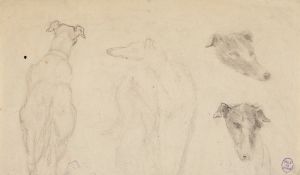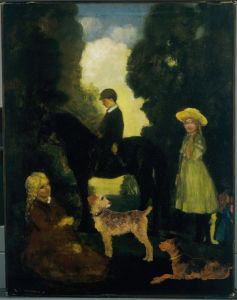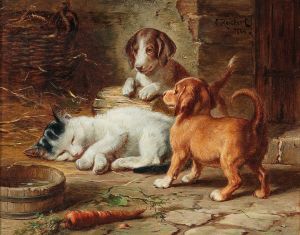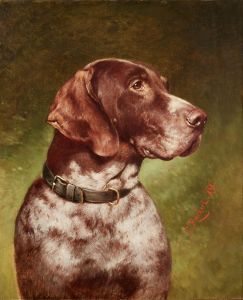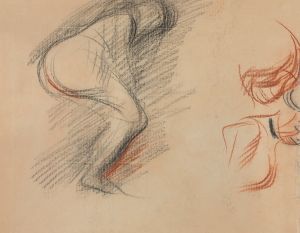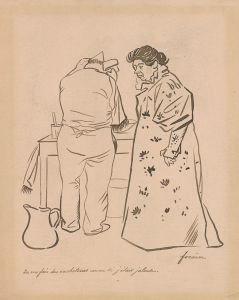
Chiens et sabots de cheval
A hand-painted replica of Henri de Toulouse-Lautrec’s masterpiece Chiens et sabots de cheval, meticulously crafted by professional artists to capture the true essence of the original. Each piece is created with museum-quality canvas and rare mineral pigments, carefully painted by experienced artists with delicate brushstrokes and rich, layered colors to perfectly recreate the texture of the original artwork. Unlike machine-printed reproductions, this hand-painted version brings the painting to life, infused with the artist’s emotions and skill in every stroke. Whether for personal collection or home decoration, it instantly elevates the artistic atmosphere of any space.
Henri de Toulouse-Lautrec, a prominent French Post-Impressionist artist, is widely recognized for his depictions of Parisian nightlife, cabaret scenes, and portraits of individuals from various walks of life. Among his extensive body of work, the painting Chiens et sabots de cheval (translated as Dogs and Horse Hooves) is a lesser-known piece that reflects his keen observational skills and ability to capture the essence of his subjects with a unique perspective.
The painting, created in the late 19th century, showcases Toulouse-Lautrec's characteristic style, which often combined bold outlines, dynamic compositions, and a focus on movement and expression. In Chiens et sabots de cheval, the artist depicts a scene involving dogs and the hooves of a horse, though the exact context or narrative of the work remains unclear. The composition emphasizes the lower portion of the animals, with the horse's hooves and the dogs occupying the central focus. This unusual framing highlights Toulouse-Lautrec's interest in unconventional perspectives and his ability to find beauty and intrigue in everyday moments.
Toulouse-Lautrec was deeply influenced by Japanese ukiyo-e prints, which often featured cropped compositions and a focus on specific details rather than the entire subject. This influence is evident in Chiens et sabots de cheval, where the partial depiction of the horse and the close attention to the dogs suggest a deliberate choice to draw the viewer's attention to these elements. The painting also reflects his fascination with animals, a recurring theme in some of his works.
As with many of Toulouse-Lautrec's paintings, Chiens et sabots de cheval demonstrates his mastery of color and texture. The brushwork is lively and expressive, capturing the energy and movement of the animals. The use of earthy tones and subtle contrasts adds depth to the composition, creating a sense of immediacy and realism.
While Chiens et sabots de cheval is not as widely studied or exhibited as some of Toulouse-Lautrec's more famous works, it remains an example of his innovative approach to art and his ability to find inspiration in unexpected subjects. The painting is a testament to his skill as an observer of life and his dedication to portraying the world around him with honesty and creativity.
Further details about the painting's provenance, current location, or specific historical context are not readily available.





